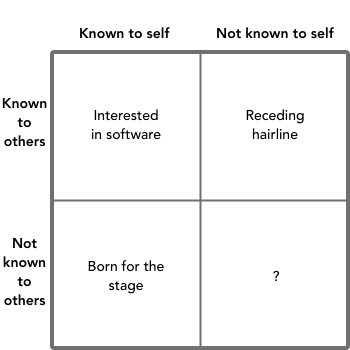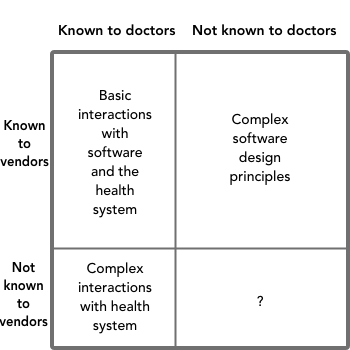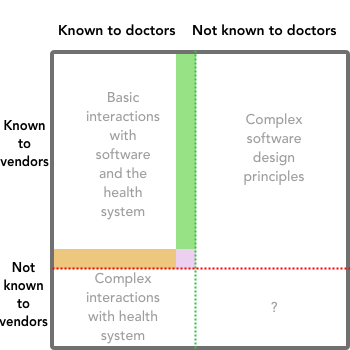Why the world needs more tech savvy clinicians
On the Johari Window and the role of generalists in a rapidly evolving health ecosystem

Brent Richards is an ICU consultant on the Gold Coast who has a mesh network of raspberry pis in his home that monitor atmospheric CO2, temperature, and a whole other host of environmental variables.
Each node in the network runs software that he wrote himself, in Docker containers that he configured and deployed.
Needless to say I was impressed when I heard this. I wasn't aware the College of Intensive Care Medicine included devops in its curriculum.
When I met Brent for the first time yesterday at the Cohort Innovation Space (originally to apply his experience to our medical workforce startup Go Locum), it became immediately clear that I'd found one of my ilk.
We spoke openly about the need for generalists in a health ecocsystem that is increasingly rewarding specialists, both in the way that it is funded and the way operational roles are structured.
He also taught me about the Johari Window, which is a model for interpersonal communcation used by psyschologists. Together we explored an extension of this model to include the doctor and the technology vendor, and the merits of having clinicians who are willing to dive into "deep technology" as a way to maximise the surface area of the common ground between these two parties.
The Johari Window
The Johari Window was named via a portmanteau of Joseph Luft & Harrington Ingham, the psychologists who cooked it up in 1955.
The Window is comprised of 4 panes that organise groups of facts or traits about a person. These facts might either be known or unknown to the person, as well as known or unknown to other people. The pane the trait lives in is determined by the combination of these two states that are relevant to the trait.
Here's a Johari Window for myself I prepared earlier:

As you can see, the Interested in software trait in the top left pane because it is both Known to self and Known to others where as the Receding hairline trait is in the top right because it is Known to others but not Known to self. (Ignorance is bliss).
A modified Johari Window
With a few modifications, we can modify the Johari Window to reflect Brent's point on the need for more translators - doctors who know both clinical medicine and modern non-clinical technologies. They are the bridge between clinical practice and the creators of emergent tech like AI, software as a medical device and so on:

If we agree that:
- A) Our objective is to maximise the surface area of the Known to doctors and Known to vendors pane (to maximise mutual understanding and therefore build the best products) AND
- B) Vendors likely know more about the basics of the health system than the average clinician does about software design¹
then we can conclude that there's a fantastic opportunity here for doctors that delve into the depths of technology.
For every unit of knowledge that they accrue in the technology space, doctors increase the surface area of the top left pane substantially more than an equivalent gain by a technologist:

In this graphical example, you can see that the surface area of the green rectangle is much larger than the orange rectangle. For every n units of new knowledge obtained, the doctors were able to increase surface area of the "mutual ground" pane far more.
One ingredient to solve a complex problem
I'm not for a minute suggesting that getting clinicians to run everything is the answer - lord knows we're famous for being terrible managers of money, for example.
But you can't tell me that projects like the My Health Record rollout wouldn't have benefited from more tech savvy clinicians overseeing and welcoming in the workflow changes required to pull it off.
¹ - I'm sure not everyone agrees!
